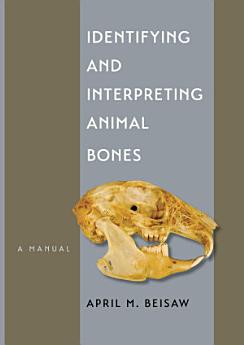Identifying and Interpreting Animal Bones: A Manual
Oct 2013 · Texas A&M University Anthropology Series Book 18 · Texas A&M University Press
Ebook
192
Pages
reportRatings and reviews aren’t verified Learn More
About this ebook
Offering a field-tested analytic method for identifying faunal remains, along with helpful references, images, and examples of the most commonly encountered North American species, Identifying and Interpreting Animal Bones: A Manual provides an important new reference for students, avocational archaeologists, and even naturalists and wildlife enthusiasts. Using the basic principles outlined here, the bones of any vertebrate animal, including humans, can be identified and their relevance to common research questions can be better understood.
Because the interpretation of archaeological sites depends heavily on the analysis of surrounding materials—soils, artifacts, and floral and faunal remains—it is important that non-human remains be correctly distinguished from human bones, that distinctions between domesticated and wild or feral animals be made correctly, and that evidence of the reasons for faunal remains in the site be recognized. But the ability to identify and analyze animal bones is a skill that is not easy to learn from a traditional textbook. In Identifying and Interpreting Animal Bones, veteran archaeologist and educator April Beisaw guides readers through the stages of identification and analysis with sample images and data, also illustrating how specialists make analytical decisions that allow for the identification of the smallest fragments of bone.
Extensive additional illustrative material, from the author’s own collected assemblages and from those in the Archaeological Analytical Research Facility at Binghamton University in New York, are also available in the book’s online supplement. There, readers can view and interact with images to further understanding of the principles explained in the text.
Because the interpretation of archaeological sites depends heavily on the analysis of surrounding materials—soils, artifacts, and floral and faunal remains—it is important that non-human remains be correctly distinguished from human bones, that distinctions between domesticated and wild or feral animals be made correctly, and that evidence of the reasons for faunal remains in the site be recognized. But the ability to identify and analyze animal bones is a skill that is not easy to learn from a traditional textbook. In Identifying and Interpreting Animal Bones, veteran archaeologist and educator April Beisaw guides readers through the stages of identification and analysis with sample images and data, also illustrating how specialists make analytical decisions that allow for the identification of the smallest fragments of bone.
Extensive additional illustrative material, from the author’s own collected assemblages and from those in the Archaeological Analytical Research Facility at Binghamton University in New York, are also available in the book’s online supplement. There, readers can view and interact with images to further understanding of the principles explained in the text.
About the author
APRIL M. BEISAW is an assistant professor of anthropology at Vassar College in Poughkeepsie, New York, and an adjunct research associate in anthropology at Binghamton University. She has served as an independent faunal analyst since 1998 and has analyzed assemblages from prehistoric and historic sites across North America.
Rate this ebook
Tell us what you think.
Reading information
Smartphones and tablets
Install the Google Play Books app for Android and iPad/iPhone. It syncs automatically with your account and allows you to read online or offline wherever you are.
Laptops and computers
You can listen to audiobooks purchased on Google Play using your computer's web browser.
eReaders and other devices
To read on e-ink devices like Kobo eReaders, you'll need to download a file and transfer it to your device. Follow the detailed Help Center instructions to transfer the files to supported eReaders.







